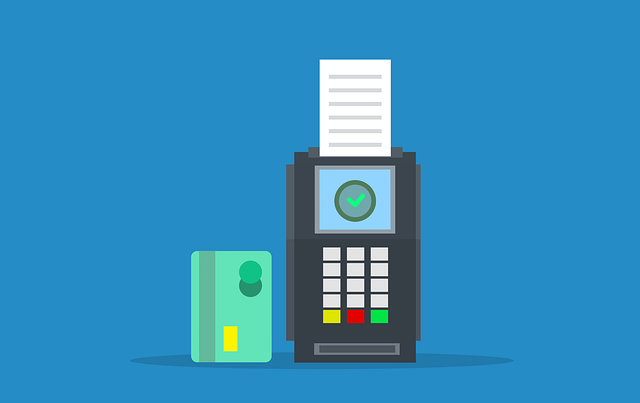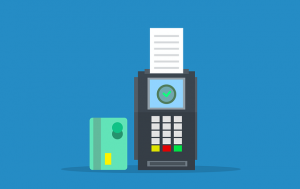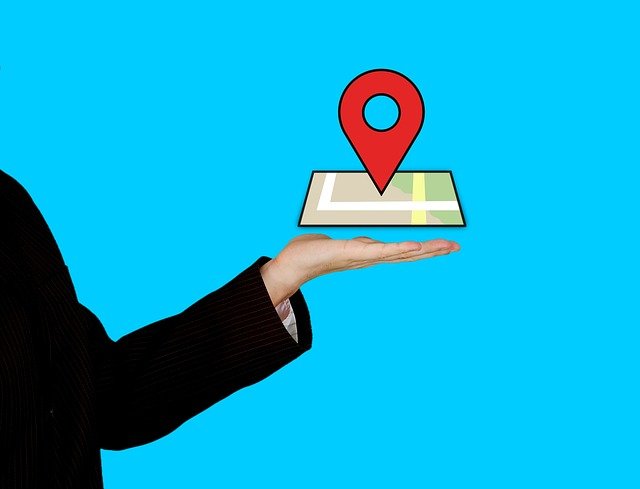
What Is Quickbooks Point of Sale (POS)?
 Intuit offers a wide variety of add-on products for Quickbooks, one of which is Point of Sale (POS). Whether your business operates locally or online, you may want to use it. Quickbooks POS is similar to other point-of-sale systems. With it, you can accept payments from your business’s customers. However, Quickbooks POS offers other features that make it a superior choice. To learn more about Quickbooks POS and the benefits it offers, keep reading.
Intuit offers a wide variety of add-on products for Quickbooks, one of which is Point of Sale (POS). Whether your business operates locally or online, you may want to use it. Quickbooks POS is similar to other point-of-sale systems. With it, you can accept payments from your business’s customers. However, Quickbooks POS offers other features that make it a superior choice. To learn more about Quickbooks POS and the benefits it offers, keep reading.
Overview of Quickbooks POS
Quickbooks POS is a point-of-sale system that’s designed for retail businesses. If you own a retail business, you’ll need some type of post-of-sale system. A point-of-sale system is a payment solution that allows your business to accept payments from customers. The point-of-sale system will process customers’ payments. Developed by Intuit, Quickbooks POS is a robust point-of-sale system that offers everything your retail business needs to accept payments.
Benefits of Using Quickbooks POS
Why should you use Quickbooks POS exactly? For starters, it integrates seamlessly with Quickbooks. When you process a customer’s payment, the transaction will be recorded in your business’s Quickbooks account. Other point-of-sale systems may or may not offer Quickbooks integration. By choosing Quickbooks POS, you can rest assured knowing that integration is possible.
Another benefit of using Quickbooks POS is contactless payments. When using Intuit’s signature point-of-sale system, your business will be able to accept near-field communication (NFC) and other contactless payment methods. Many other point-of-sale systems only support traditional, contact-based payment methods, such as credit cards and debit cards. Using Quickbooks POS allows your business to accept both contact-based and contactless payment methods.
Your business won’t incur recurring charges with Quickbooks POS. While there are several different Quickbooks POS packages available, they all require a one-time purchase. The POS Basic package, for instance, requires a one-time purchase of $1,200, whereas the POS Pro package requires a one-time purchase of $1,700. On the high end, there’s the POS Multi-Store purchase, which requires a one-time purchase of $1,900. Aside from the actual hardware, your business won’t incur any other expenses when using Quickbooks POS.
Regardless of which package you choose, you’ll be able to track and manage your business’s inventory. All three Quickbooks POS packages come with inventory management. Inventory management, as well as tracking, is achieved through Quickbooks integration. In Quickbooks, you’ll be able to track and manage your business’s inventory of products while using Quickbooks POS.
Have anything else that you’d like to add? Let us know in the comments section below!

How to Split a Transaction in Quickbooks
 Are you trying to a split transaction? Regardless of what type of business you operate, you probably won’t encounter many instances in which you’ll need to split a transaction. Most transactions are connected to a single account. As a result, they don’t require splitting. When the need arises, though, you can split a transaction using Quickbooks.
Are you trying to a split transaction? Regardless of what type of business you operate, you probably won’t encounter many instances in which you’ll need to split a transaction. Most transactions are connected to a single account. As a result, they don’t require splitting. When the need arises, though, you can split a transaction using Quickbooks.
What Is a Split Transaction?
A split transaction is exactly what it sounds like: a transaction that’s split among two or more accounts. Each sale that your business generates is a transaction. When your business sells a product or service, it will create a transaction. A split transaction is essentially a single sale that has multiple customers. Each of the customers pays a partial amount of the total transaction.
When to Use Split Transactions
You should use split transactions whenever multiple customers split the purchase total of a transaction. All transactions have at least one customer. If multiple customers pay for the same transaction, they are sharing the cost of that transaction. Assuming those customers have their own accounts, you can split the transaction. Doing so will create cleaner records that allow you to see exactly how much each account has spent on your business’s products or services.
Steps to Split a Transaction
When adding a transaction to your business’s register, you won’t have the option of assigning multiple accounts to it. Quickbooks only allows a single account for any given transaction when added to the register. Fortunately, you can still create a split transaction; you just need to assign the additional accounts using an alternative method.
In Quickbooks Online, you can assign additional accounts to a transaction by accessing your Chart of Accounts. From the home screen, click the “Accounting” menu and choose “Chart of Accounts.” After locating the primary account associated with the transaction, click the “View register” link below the “Action” column. You can then search for the transaction that you’d like to split.
Once you’ve found the transaction, click the “Edit” link. You should now see an option to add other accounts to the same transaction. You’ll also need to enter the amount paid by each account. Keep in mind that the total amount paid by all accounts must equal the total amount of the transactions.
Did this tutorial work for you? Let us know in the comments section below!

What Is an Undeposited Funds Account in Quickbooks?
 When using Quickbooks, you may come across the option to create an undeposited funds account. It’s a common feature in Quickbooks . While optional, many business owners and accountants use undeposited funds accounts to consolidate multiple transactions, thus allowing for cleaner records. What is an undeposited funds account exactly, and how do you use them?
When using Quickbooks, you may come across the option to create an undeposited funds account. It’s a common feature in Quickbooks . While optional, many business owners and accountants use undeposited funds accounts to consolidate multiple transactions, thus allowing for cleaner records. What is an undeposited funds account exactly, and how do you use them?
Overview of Undeposited Funds Accounts
An undeposited funds account is a financial account in Quickbooks that’s used to combine multiple payments together. You probably won’t make a separate bank transfer each time a customer pays your business for a product or service. Rather, you’ll likely wait until you’ve collected payments from multiple customers before transferring the money to your bank account. In doing so, your bank will record all of the payments as a single deposit.
You may receive six $500 payments from six different customers, for example. When you deposit the $3,000 into your bank account, your bank will record it as a single $3,000 deposit rather than six $500 deposits. Undeposited funds accounts offer a solution. With an undeposited funds account, you can hold the payments that you wish to combine.
How to Create an Undeposited Funds Account
An undeposited funds account essentially allows you to combine multiple payments from multiple customers before depositing them into your bank account. Assuming you use Quickbooks Payments — a feature available in Quickbooks Desktop — it will automatically do this on your behalf. You won’t have to perform any additional steps. Rather, Quickbooks Payments will create an undeposited funds account for your business’s payments.
You can create an undeposited funds account manually, however, in just a few easy steps. In Quickbooks Desktop, go to the home page and click the “Edit” menu, followed by “Preferences.” From the main list, select “Payments” and navigate to the “Company Preferences” tab. You should see a box labeled “Use Undeposited Funds as a default deposit to account.” Click this box so that it places a checkmark in it. When finished, click “OK” to complete the setup.
With the undeposited funds account set up, you can now add sales receipts to it. Just go to “Create Sales Receipt” and choose the customer from the “Customer” menu. Under the “Deposit to” menu, select “Undeposited Funds.” After completing the other fields, click “Save & Close” to finish the process. The sales receipt will then be added to an undeposited funds account.
Have anything else that you’d like to add? Let us know in the comments section below!

Why Liquidity Is Important for Your Business
 What’s the liquidity of your business’s assets? All businesses have assets. Assets are items of monetary value. They can be tangible or intangible. Regardless, if your business owns something of value, it’s considered an asset. Assets with high liquidity, however, are typically more valuable than those with low liquidity. To learn more about liquidity and why it’s important for your business, keep reading.
What’s the liquidity of your business’s assets? All businesses have assets. Assets are items of monetary value. They can be tangible or intangible. Regardless, if your business owns something of value, it’s considered an asset. Assets with high liquidity, however, are typically more valuable than those with low liquidity. To learn more about liquidity and why it’s important for your business, keep reading.
What Is Liquidity?
The term “liquidity” refers to the ease at which you can convert a given asset into cash. Most assets can be sold. When you sell an asset, you’ll convert it into cash. Assets with low liquidity are harder to convert — and often take longer to convert — into cash than those with high liquidity.
Secure Loans
Liquidity is important because it can affect your ability to secure business loans. Most banks and other financial lenders will look at your business’s liquidity ratio during the application process. When you apply for a loan, the bank or lender will analyze your business’ liquidity ratio to determine its overall financial health. A high liquidity ratio indicates that your business is capable of paying back borrowed money. A low liquidity ratio, on the other hand, indicates that your business may struggle to pay back borrowed money. To secure loans, you should focus on improving your business’s liquidity ratio.
Cover Unexpected Expenses
As a business owner, you’ll probably encounter expenses that you didn’t originally plan for. Unexpected expenses come with the territory when operating a commercial enterprise. Maybe you need to purchase a new piece of equipment, or perhaps you need to take out a new loan to finance your business. Regardless, unexpected expenses can and do occur in the world of business. Fortunately, a high liquidity ratio can help your business cover these expenses. When an unexpected expense arises, you can easily and quickly convert assets into cash. Using this cash, you can then pay off the expense.
Increase Cash Flow
With a high liquidity ratio, you can increase your business’s cash flow on the fly. Converting an asset into cash will result in a higher cash flow. Your business will have more cash on hand to cover both expected and unexpected expenses. A low liquidity ratio, conversely, can harm your business’s cash flow. You may struggle to convert assets into cash, resulting in a lower cash flow.
Have anything else that you’d like to add? Let us know in the comments section below!

How to Use Google Maps to Track Customers and Vendors in Quickbooks
 Google Maps integration is a native feature in Quickbooks Desktop. When using the desktop version of Intuit’s popular accounting software, you can set up Google Maps to track your business’s customers and vendors. Google Maps integration will allow you to pull maps showing the geographic locations of customers and vendors. And like all Google Maps, these maps will reveal turn-by-turn directions to the respective addresses. How do you use Google Maps to track customers and vendors in Quickbooks exactly?
Google Maps integration is a native feature in Quickbooks Desktop. When using the desktop version of Intuit’s popular accounting software, you can set up Google Maps to track your business’s customers and vendors. Google Maps integration will allow you to pull maps showing the geographic locations of customers and vendors. And like all Google Maps, these maps will reveal turn-by-turn directions to the respective addresses. How do you use Google Maps to track customers and vendors in Quickbooks exactly?
Update Google Desktop
Before using Google Maps, you should update your Quickbooks Desktop installation to the latest version. Intuit regularly releases new versions of its accounting software. Some of these updates introduce new features, whereas others fix problems or improve stability. Regardless, Intuit recommends downloading the latest version of Quickbooks Desktop before using Google Maps to track customers and vendors.
You can download the latest version of Quickbooks Desktop by following this link. Most updates are relatively small, so it shouldn’t take a long time to download. When finished, you’ll have the latest version of Quickbooks Desktop installed on your computer.
Pull Up Maps or Directions
After updating to the latest version, launch Quickbooks Desktop and pull up “Maps” or “Directions.” You can find these two options available under the “Vendor Center.” When logged in to your Quickbooks Desktop account, click the “Customer Center” or “Vendor Center.” If you want to track the location of a customer, you’ll need to select the former option. To track the location of a vendor, you’ll need to select the latter option. After clicking “Customer Center” or “Vendor Center,” you should see a list of all your business’s known customers or vendors. Simply scroll through this list until you find the customer or vendor whom you wish to track with Google Maps. You can click the customer’s or vendor’s name.
Upon selecting a customer’s or vendor’s name, you should see an information window. Within this window is an option for “Maps” or “Directions.” Clicking “Maps” will reveal a Google Maps image of the customer’s or vendor’s location, whereas clicking “Directions” will reveal a Google Maps image showing directions from your business’s location to the customer’s or vendor’s location.”
Keep in mind that you can save the Google Maps images displayed by Quickbooks Desktop. When you save a Google Maps image, it will be stored on your Google account.
Did this tutorial work for you? Let us know in the comments section below!

How to Track Commissions Using Quickbooks
 In the retail industry, it’s not uncommon for sales reps to earn commissions. Most sales reps are still paid wages or salary, but they’ll earn a bonus based on the number of sales they generate. Known as commissions, they are designed to motivate sales reps. If your business’s employees earn commissions, though, you’ll need to track them. Fortunately, Quickbooks offers a simple and easy way to track commissions.
In the retail industry, it’s not uncommon for sales reps to earn commissions. Most sales reps are still paid wages or salary, but they’ll earn a bonus based on the number of sales they generate. Known as commissions, they are designed to motivate sales reps. If your business’s employees earn commissions, though, you’ll need to track them. Fortunately, Quickbooks offers a simple and easy way to track commissions.
The Basics of Tracking Commissions in Quickbooks
Quickbooks Online doesn’t offer a specific feature for tracking commissions. Instead, it offers class tracking and location tracking. You can use either of these options to track commissions. Class tracking and location tracking are included as a native feature in Quickbooks Online. With either of these options, you’ll be able to track the commissions earned by your business’s employees.
How to Enable Class or Location Tracking
You can enable class tracking or location tracking in Quickbooks Online by clicking the gear icon and choosing “Account and Settings.” From the left-hand menu, select “Advanced.” You should now see a window containing various account settings. Look for “Categories,” and click the small pencil-shaped icon next to it. Quickbooks will then expand the “Categories” section so that it contains an option for “Track classes” and an option for “Track locations.” Click the box next to either one of these options to enable class or location tracking.
Using Class or Tracking to Track Commissions
With class tracking or location tracking enabled, you can now track commissions. This is done by adding your sales reps to a list. If you use class tracking, you’ll need to add them to a class list. If you use location tracking, on the other hand, you’ll need to add your sales reps to a location list. Class tracking and location tracking both use lists. When you include a sales reps on a class or location list, you’ll be able to track the commissions he or she earns.
Quickbooks will automatically categorize your sales reps on the list to which you add them. Location tracking is typically used for tracking specific locations. With that said, you can use it to track almost any element or segment of your business’s operations, including commissions. Just add the sales rep to a list, after which you pay the sales rep the commission. You can then run a report to view all of the commissions earned by the sales rep.
Did this tutorial work for you? Let us know in the comments section below!

How to Manually Add Transactions to Quickbooks
 Recording transactions is essential when running a business. You’ll need to record all of your business’s income and expense transactions so that you can calculate its profits. Only then will you know how much money your business has made, and the taxes your business needs to pay. In Quickbooks Online, you can manually add transactions in just a few simple steps. Below is a brief guide on how to manually add transactions using Intuit’s cloud-based accounting software.
Recording transactions is essential when running a business. You’ll need to record all of your business’s income and expense transactions so that you can calculate its profits. Only then will you know how much money your business has made, and the taxes your business needs to pay. In Quickbooks Online, you can manually add transactions in just a few simple steps. Below is a brief guide on how to manually add transactions using Intuit’s cloud-based accounting software.
Pull Up Your Account Register
Start by pulling up your account register in Quickbooks Online. To do this, click the “Accounting” menu on the home screen and select “Chart of Accounts.” After locating your preferred account register, click the “View register” link under the “Actions” column.
Add the Transaction
With your account register pulled up, you can now add the transaction. You should see several fields and menus on the transaction page. Clicking the “Date” field will allow you to specify a date for the transaction. Clicking the “Add check” field will allow you to choose the type of transaction. If it’s a check, for instance, you can choose “Check.” Quickbooks Online offers several other types of transactions, including deposit, sales receipt, receive payment, bill payment, refund, expense, transfer and journal entry. Regardless, you’ll need to click “Add check” and then select the appropriate type of transaction. After adding the transactions, save the changes and exit the screen.
How to Edit Transactions
You can also edit transactions that you’ve already added. If a transaction is wrong, you can fix it by changing it. Start by going to your Chart of Accounts and choosing the register containing the transaction. Next, click “View register” in the “Actions” column. To find the transaction, click the “Filter” icon and specify your desired filter or filters. Filters are optional. Considering that many businesses have hundreds or thousands of transactions, though, you may need to use them to find a specific transaction.
Once you’ve found the transaction that you want to edit in your register, click it so that the transaction is expanded in your Quickbooks Online account. You should then see fields and menus with information about the transaction. Just make the necessary changes to the transaction by selecting the fields or menus, after which you can click “Save and close” to complete the process.
Did this tutorial work for you? Let us know in the comments section below!

Write-Off vs Write-Down in Accounting: What’s the Difference?
 The terms “write-off” and “write-down” are often interchangeably to describe the devaluation of an asset. Regardless of what type of business you own, chances are it has assets. Nearly all businesses have at least some assets. Assets are things of monetary value, such as cash, equipment, materials, real property and even patents or other forms of intellectual property.
The terms “write-off” and “write-down” are often interchangeably to describe the devaluation of an asset. Regardless of what type of business you own, chances are it has assets. Nearly all businesses have at least some assets. Assets are things of monetary value, such as cash, equipment, materials, real property and even patents or other forms of intellectual property.
While both write-offs and write-downs do, in fact, involve lowering the value of an asset, they aren’t necessarily the same. Write-offs and write-downs are intended for different purposes. When recording
What Is a Write-Off?
A write-off is the complete devaluation of an asset. When you write-off an asset, you are claiming that it no longer holds any value to your business. If a piece of equipment is broken or obsolete, for instance, you may want to declare it as a write-off. You can write-off the asset by lowering its value to $0 in your business’s books.
You can also claim write-offs such as this as a tax deduction. The Internal Revenue Service (IRS) allows businesses, as well as freelancers, to deduct the cost of write-offs from their taxes.
What Is a Write-Down?
A write-down, on the other hand, is the partial devaluation of an asset. Assets can depreciate in value. In some cases, they may lose all of their original value in a short period. In other cases, devaluation occurs more slowly. A write-down is an accounting process in which you record an asset’s value as being lowering than its original value. The asset still has some value, but it’s less than the original value from when you initially purchased or acquired the asset.
Differences Between Write-Offs and Write-Downs
The main difference between write-offs and write-downs is that the former is the complete devaluation of an asset, whereas the latter is the partial devaluation of an asset. With a write-off, you are claiming that one of your business’s assets is essentially worthless. With a write-down, you are claiming that an asset has lost some but not all of its original value.
There are also nuances regarding the tax implications of write-offs and write-downs. Write-offs offer the greatest tax benefits. When you write-off an asset, you’ll lower your business’s tax liabilities for the year in which you claim it. Write-downs can lower your business’s tax liabilities as well, but they don’t have the same positive impact because they still recognize the asset as having some value.
Have anything else that you’d like to add? Let us know in the comments section below!

How to Record a Reimbursement in Quickbooks
 Do your business’s employees use their own money to purchase products or services related to their respective job? If so, you’ll need to reimburse them. Employers in the United States are required to either purchase these essential products and services on behalf of their employees, or they may reimburse their employees for the cost of these products and services. When taking the latter route, of course, you’ll have to record the reimbursements. In Quickbooks, you can record a reimbursement to an employee in a few easy steps.
Do your business’s employees use their own money to purchase products or services related to their respective job? If so, you’ll need to reimburse them. Employers in the United States are required to either purchase these essential products and services on behalf of their employees, or they may reimburse their employees for the cost of these products and services. When taking the latter route, of course, you’ll have to record the reimbursements. In Quickbooks, you can record a reimbursement to an employee in a few easy steps.
Create a Journal Entry
Quickbooks offers journal entries as a way to record reimbursements. You can create a new journal entry in Quickbooks Online by selecting the “Create +” button on the home screen, followed by “Journal Entry.”
When setting up the new journal entry, you’ll need to choose a liability account as well as the dollar amount of the reimbursement. You’ll also need to select the employee for whom you are recording the reimbursement under the “Name” drop-down menu. For the “Account” menu, choose an expense account. For the “Debits” field, enter the dollar amount of the reimbursement. After completing these steps, click “Save and close” to finish setting up the new journal entry.
Pay the Employee
Upon creating a new journal entry, the reimbursement should be recorded in your Quickbooks account. However, you’ll still need to pay the employee. After all, that’s the entire purpose of a reimbursement.
To pay the employee for whom you recorded the reimbursement, click the “+ New” button on the home screen and select “Expense.” From the “Payee” drop-down menu, find and select the employee’s name. Next, click the “Category” drop-down menu and choose the option for a liability account. If you don’t already have a liability account, you’ll need to create one.
You’ll also need to specify a few other pieces of information to pay the employee, including the dollar amount of the reimbursement. After completing the required fields, select “Save and close.” Keep in mind that Quickbooks Online Payroll offers a special type of account for reimbursement payments. Known as a reimbursement account, it will keep all of your reimbursement payments grouped together so that you can easily access and analyze them. Even without Payroll, though, you can still record reimbursements, and you can still pay employees for those reimbursements.
Have anything else that you’d like to add? Let us know in the comments section below!

Classes vs Subclasses in Quickbooks: What’s the Difference?
 Quickbooks Desktop makes it easy to categorize your business’s accounting data. You can separate transactions from customers from vendors, for example. You probably don’t want all of these transactions grouped together. By separating them, you can compare your business’s sales revenue to its inventory expenses. But that’s not the only categorization method available in Quickbooks Desktop. Intuit’s popular accounting software offers other ways to categorize your business’s accounting data, including classes and subclasses.
Quickbooks Desktop makes it easy to categorize your business’s accounting data. You can separate transactions from customers from vendors, for example. You probably don’t want all of these transactions grouped together. By separating them, you can compare your business’s sales revenue to its inventory expenses. But that’s not the only categorization method available in Quickbooks Desktop. Intuit’s popular accounting software offers other ways to categorize your business’s accounting data, including classes and subclasses.
What Is a Class?
A class is simply a customizable tag that’s used to categorize accounting data in Quickbooks Desktop. They aren’t required. Rather, Quickbooks Desktop gives you the option of using classes.
If you want to categorize your business’s accounting data using a custom method, classes are the answer. You can set up classes for your business’s different locations, vendors, promotions, local vs online store and pretty much anything else. When viewing your business’s accounting data in Quickbooks Desktop, you can select one of these classes.
What Is a Subclass?
A subclass is essentially a child-level class. It works like a standard class by categorizing and tracking accounting data. You can create a subclass to categorize data using a custom method. The difference is that subclasses go under a standard class.
All subclasses must be assigned to a standard class. They are known as “subclasses” because they go under a standard class. With subclasses, you can categorize data within a standard class. If your business has three locations, and there are three departments within each of these locations, you can create subclasses for the three departments. The subclasses will simply go under the location-based classes.
How to Use Classes and Subclasses
To use classes and subclasses, you’ll need to enable class tracking in Quickbooks Desktop. Open your business’s company file and choose “Preferences” from the “Edit” menu. Under “Accounting,” click “Company Preferences.” You should then see an option for “Use class tracking for transactions.” Assuming it’s currently unticked, click the box to enable class tracking. When finished, click “OK” to save the changes.
Once enabled, you’ll be able to assign classes and subclasses to your business’s recorded transactions. From invoices and sales receipts to checks, bills, purchase orders and more, most transactions support the use of classes and subclasses. Keep in mind, though, that all subclasses must be assigned to a standard class.
Have anything else that you’d like to add? Let us know in the comments section below!
